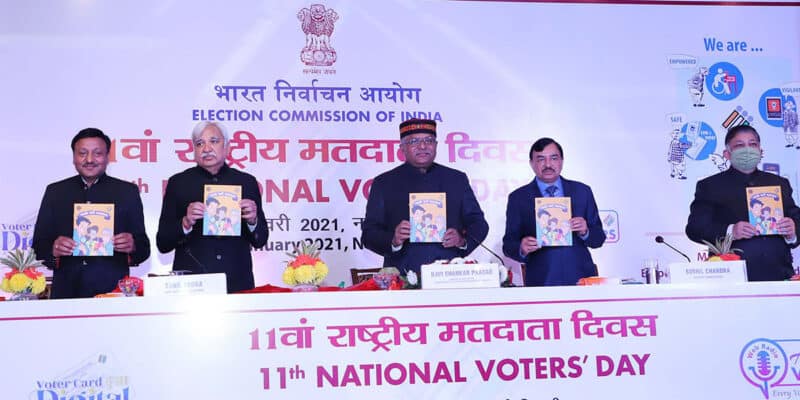Only 41 lakh voters have downloaded an e-EPIC digital voter ID, over a year after the feature was launched by the Election Commission of India, an RTI response obtained by Entrackr revealed. What’s more, the total number of eligible voters has stayed the same for over a year, around 1.7 crore. This is a mere fraction of the 91.2 crore people who were eligible to vote in 2019.
Launched with much fanfare on January 25 last year, the electronic card promised voters that they would no longer need to wait for their voter IDs to arrive in the post, or go to their municipality to obtain the card. They could now just download a PDF of their voter ID, which would be a valid proof of identity for them; this document would have a QR code to validate its authenticity, a bit like Aadhaar, which can be downloaded by Indian residents with just a phone number.
e-EPIC scheme stillborn?
On the day this feature was launched, the Election Commission practically froze the program, mandating that only voters who signed up for voting after November 2020 were eligible — which they already were in a beta test-type period before the official launch. At that time, the commission cited high demand as the reason. But over a year later, the status quo persists, with only new voters eligible.
It is unclear why the commission decided to apparently nix the e-EPIC feature, which could have been a boon for many Indians, and not just during elections. Voter IDs are among the most commonly accepted proofs of identity, age and address across the private and public sector in India.
But the proof of address required to obtain a voter ID is surprisingly minimal, probably due to how fundamental the constitution considers the right to vote: a picture of an envelope that was delivered to an applicant through India Post is enough as proof of address to obtain a Voter ID, or to change their address.
Unlike Aadhaar, which is run by the union government and has centralized procedures to dispatch cards through the post office, voter ID cards are printed by municipalities, and it is their responsibility to get cards to people. But many municipalities might content themselves with adding a voter to the electoral roll without actually sending them the actual ID. (Voting is, after all, allowed with other IDs if a voter is on the roll.)
Aadhaar–Voter ID linking
Security concerns with how easily someone might obtain a digital voter ID may not exactly be why the feature has been postponed, as people who register to vote right now are eligible to download an e-EPIC.
But another digital ID effort by the government may shine some light on why this one has been postponed. In December, the government passed the Election Laws (Amendment) Bill, 2021, which opens the door to requiring citizens to be required to provide their Aadhaar when registering for a voter ID. This is a controversial requirement, with two Members of Parliament saying it violated the constitutional right to privacy.
The government’s main concern with the current system is the “purity” of voter rolls, as one citizen is only allowed to be registered to vote in one place at a time, but people who move frequently often register multiple times in multiple places. While it’s unclear just how much this poses a problem to the legitimacy of Indian elections, the ECI has tried since 2015 to require Aadhaar to be linked to EPICs.
Since Aadhaar records are de-duplicated based on biometric data, linking them to EPIC may essentially eliminate duplicate entries of voters (while possibly eliminating entries of voters who fail to link their Aadhaar). Perhaps when this is done — and rolls around the country are “pure” — digital voter IDs may be expanded to more of the population.














